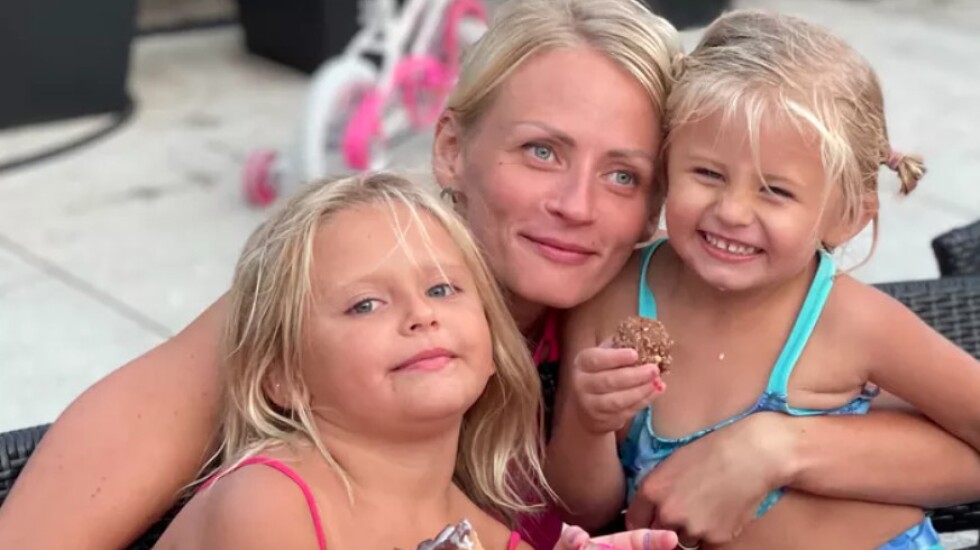
Women and girls only account for one-tenth of the world’s murder victims, but they are more than half of victims killed by a domestic partner or family member, according to recent report by the United Nations Office on Drugs and Crime.
There were 47,000 women and girls killed in such a manner in 2020 worldwide, which means a female is murdered by a so-called loved one or relative every 11 minutes, the U.N. research showed. In the United States, 89% of the 2,059 women killed by men that same year knew their assailants, a study released by the Violence Policy Center revealed.
Most of these victims found themselves at the wrong end of a gun, but some of the murderers resorted to other methods to unleash their wrath — and it happened once again, in horrific and heartbreaking fashion, in a Chicago suburb last week.
Three generations of women and girls — Lilia, Vera, Vivian and Amilia Kisliak — became a part of these tragic statistics when they were discovered stabbed to death in their Buffalo Grove home.
Andrei Kisliak fatally wounded his mother, estranged wife, and two daughters, ages 6 and 4, police said. The 39-year-old man, who had been allegedly threatening and harassing Vera Kisliak for months, then died by suicide, according to Sun-Times’ reporters Tom Schuba and Andy Grimm.
The potential for such tragedies is seemingly on the rise: Calls to the Illinois Domestic Violence Hotline rose 9% in 2021 as compared to 2020, and shootings related to domestic violence rose 64% in Chicago in 2021, according to a 2022 report from The Network, a research and advocacy organization on domestic violence prevention.
“Tremendous pressure” on victims
For many people, it’s hard to understand why Vera Kisliak agreed to let Andrei Kisliak back into her home despite a judge’s warning earlier last month, especially since he reportedly said he would “slice her head off,” disfigure her and kill her family overseas after the couple’s divorce proceedings got underway in July.
Why would Vera Kisliak, 36, welcome back a man she also said abused drugs, brought prostitutes to the family’s home and violated a protective order?
But as Stephanie Love-Patterson, executive director of the Humboldt Park-based Connections for Abused Women and their Children, said, in many such cases there is a “tremendous amount of pressure coming from those who cause harm” to reverse restraining orders.
Time and time again, domestic abuse survivors show up in court alongside their attackers, asking a judge to dismiss restraining orders. The perpetrator may be embracing the survivor on a courtroom bench. They may be smiling, whispering in the injured party’s ears. But they can either be lovingly professing a sincere effort to change — or threatening to injure or kill the survivor, his or her children and others if the restraining order isn’t dropped, Love-Patterson said.
The Kisliak family murder-suicide is a reminder that domestic violence remains a menacing plague in our society, and that survivors and victims should never be blamed.
Survivors who appear to be extending an olive branch to an abuser need to be supported, not shunned or shamed. Their move might seem illogical, but in reality, it could be a desperate attempt at self-preservation.
Limits on what judges can do
A judge can advise against modifying a protective order, as Lake County Judge Marnie Slavin did on Nov. 1 with the Kisliaks. And technically, they can keep a protective order in place even when there is an appeal to do otherwise. But judges know all too well that if they are dismissive of the requests, abusers can direct their anger at the court onto the survivors, said Danielle Parisi Ruffatto, managing director of Ascend Justice’s Family Law and Protective Orders Division.
Professionals never shame or guilt survivors for rescinding a protective order, Love-Patterson and Parisi Ruffatto said. They can, however, express their concerns, outline a safety plan with their clients and assure them help is around the corner if and when they need it.
Friends and family of survivors can also do their part by pointing out available resources, including hotlines and counselors, and storing small amounts of cash and important documents like passports if a mistreated loved ones decides to flee their situation, Parisi Ruffatto said. Supporters can also help survivors devise a safety plan and a shared code word if trouble arises, Love-Patterson said.
A friend of Vera Kisliak’s told the Sun-Times she wished she “could’ve done more when she needed it the most.”
Friends and acquaintances of other domestic violence victims can do their part by taking the guidance of professionals, paying attention to those who are at risk of experiencing violence and offering help at the first signs of trouble.
The Sun-Times welcomes letters to the editor and op-eds. See our guidelines.







